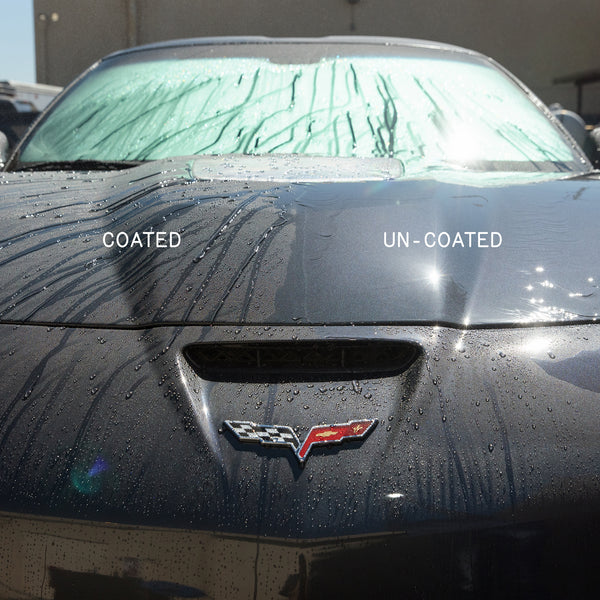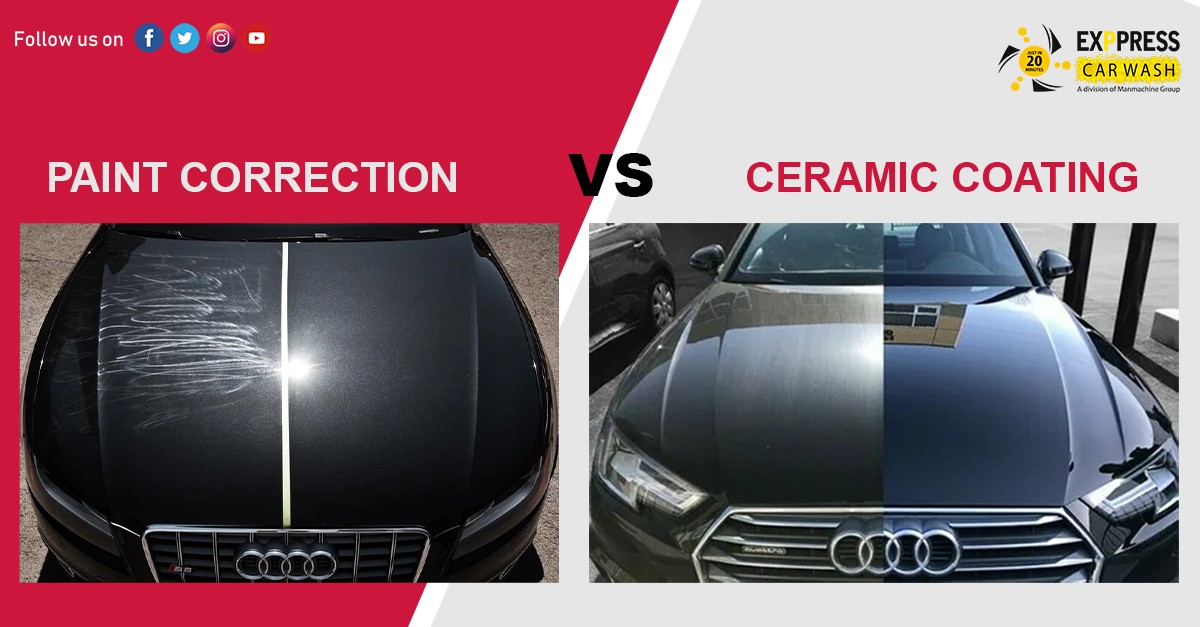Ceramic Coating: The Ultimate Option for Protecting Your Auto's Sparkle
Ceramic Coating: The Ultimate Option for Protecting Your Auto's Sparkle
Blog Article
Exploring the Scientific Research Behind Ceramic Finishing and Its Influence On Car Describing
The application of ceramic finishing in car detailing stands for a considerable innovation in automotive treatment, rooted in its innovative chemical buildings, primarily silica dioxide and titanium dioxide. As we explore the complexities of the application process and the long-lasting ramifications for car maintenance, it comes to be clear that the selection of ceramic covering can essentially modify one's strategy to cars and truck treatment.
What Is Ceramic Covering?
Ceramic covering is a contemporary option that has acquired appeal in the vehicle detailing industry for its capability to provide long-lasting defense for car surface areas. This sophisticated safety layer is usually composed of silica dioxide (SiO2), which creates a strong bond with the lorry's paint, producing a long lasting guard against ecological contaminants. Unlike traditional wax or sealants, ceramic coverings provide remarkable resistance to UV rays, chemical stains, and physical abrasions.
The application of ceramic layer includes a meticulous process, where the automobile's surface is thoroughly cleaned up and sanitized prior to the finishing is used (Ceramic Coating). When cured, the finishing improves the automobile's gloss, depth, and clarity, giving a showroom-quality finish that lasts for several years. One of the key benefits of ceramic finishing is its hydrophobic residential properties, which push back water and dust, making maintenance simpler and reducing the frequency of washes
The Chemistry of Ceramic Coating
A basic element of ceramic finish lies in its chemical composition, largely identified by the existence of silica dioxide (SiO2) This compound is integral to the development of a long lasting, protective layer that bonds chemically to the lorry's surface area. When used, the SiO2 particles undertake a process referred to as polymerization, wherein they develop a network of interconnected structures. This results in a durable, hydrophobic surface area that fends off water and contaminants.
Along with SiO2, lots of ceramic layers integrate titanium dioxide (TiO2) and other ingredients to improve their efficiency characteristics. TiO2, for example, adds to boosted firmness and chemical resistance. The communication between these compounds develops an unique molecular structure that uses a high degree of security versus environmental aspects such as UV rays, acid rainfall, and oxidation.
Additionally, the application procedure often includes a meticulous preparation of the surface to make certain optimum bond of the covering. This chemistry not only guarantees a durable finish but likewise improves the aesthetic allure of the automobile. Comprehending the intricate chemistry behind ceramic coverings is important for describing experts that intend to provide remarkable defense and durability for their customers' automobiles.
Advantages of Ceramic Finishing
While outlining professionals commonly highlight the advantages of ceramic coverings, their advantages prolong far beyond looks. Ceramic layers produce a hydrophobic surface area that drives away water, gunk, and dirt, substantially reducing the frequency of washes and the initiative called for to preserve a lorry's appearance.
Moreover, ceramic coatings improve the durability of the lorry's surface. Unlike typical waxes or sealants, which might last a couple of months, ceramic finishings can sustain for many years, offering a long-term remedy for cars and truck care. This durability converts to set you back savings, as proprietors are much less most likely to need regular reapplication.
Additionally, ceramic finishings are immune to chemical spots and etching, which can take place from acidic materials like bird droppings or tree sap. This resistance not only preserves the automobile's aesthetic appeals but also minimizes possible damage - Ceramic Coating. Overall, the financial investment in ceramic layer supplies vehicle owners a substantial return in regards to protection, convenience of upkeep, and resilient visual charm, making it an increasingly prominent selection in the realm of vehicle outlining
Application Process Described

As soon as the surface is sufficiently prepared, the ceramic layer can be applied. It is normally performed in a controlled atmosphere, such as a garage or outlining bay, to avoid contamination from dust and debris. Making use of an applicator pad, the professional applies the covering in tiny sections, operating in a crosshatch pattern to guarantee even coverage. It is important to adhere to the producer's directions pertaining to application density and curing times.
Once treated, the ceramic layer develops a solid bond with the paint, giving boosted security and a shiny coating. Correct application is essential to make the most of the longevity and efficiency of the ceramic covering.

Long-term Influence On Vehicle Treatment
The lasting impact of ceramic finishing on automobile care is considerable, as it basically alters exactly how proprietors preserve their cars. By creating a sturdy, hydrophobic layer on the automobile's surface area, ceramic layers minimize the adherence of dust, grime, and pollutants. This home minimizes the regularity of washing required, eventually conserving water and cleansing products.
Furthermore, the UV defense check it out offered by ceramic finishings assists to stop oxidation and fading of the automobile's paint, maintaining its visual allure and resale worth with time - Ceramic Coating. This protective barrier additionally decreases the likelihood of scrapes and swirl marks, which prevail issues in conventional paint coatings
In addition, ceramic coverings help with simpler upkeep, enabling proprietors to clean their vehicles with minimal initiative. The smooth surface makes it challenging for contaminants to bond, enabling simpler removal during routine cleaning.
In the future, the investment in ceramic finish might bring about set you back savings in vehicle treatment services and products. Generally, the sustaining advantages of ceramic finishes not just enhance the look of cars but likewise add to a more sustainable and effective method to lorry upkeep.
Verdict
To conclude, the application of ceramic coating stands for a significant development in cars and truck outlining, driven by its special chemical make-up of silica dioxide and titanium dioxide. This innovation not only improves the visual charm of cars but likewise provides durable security versus ecological threats and put on. The long-lasting advantages, including reduced upkeep frequency and improved resilience, underscore the worth of ceramic layers as an essential investment for maintaining car look and honesty with time.

Report this page